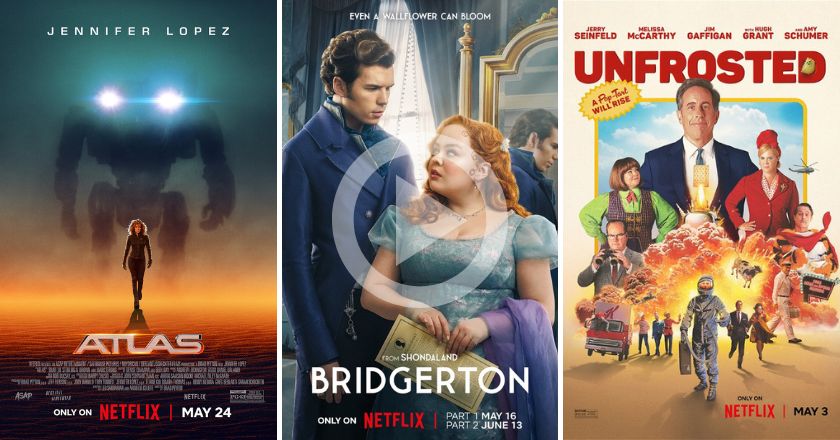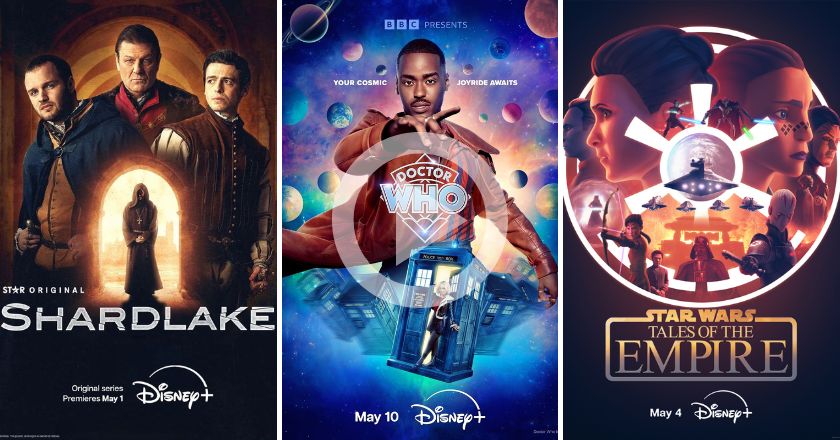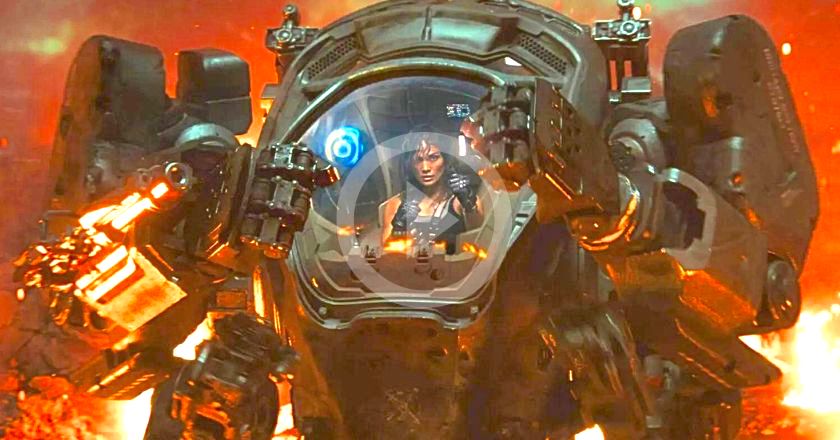[Watch the review above or read it below!]
–
You’ve set yourself up with a high bar when you want to follow up a film like Spider-Man: Into the Spider-Verse. So, how do you do it? Just. Like. This.
The follow-up to the incredible 2018 Oscar winner catches up with Miles Morales around a year after the events of that film. He’s struggling to balance his life as Spider-Man, with school and, primarily, his parents, who have grown increasingly concerned with their son’s strange behaviour. Things take a turn after the arrival of a new villain, The Spot, a portal-crafting character who Miles doesn’t take too seriously – at first. Everything escalates even further following the return of Gwen Stacy, the teen Spider-Woman who we saw find a way back to Miles at the end of the first film. I’ll leave it at that regarding plot, suffice it to say that – as the title makes clear – the Spider-Verse is key to this epic, emotional, exciting narrative.
We have three different directors from the three that helmed the first film, but you can’t tell. It’s another great trio at the helm, Joaquim Dos Santos, Kemp Powers, and Justin K. Thompson picking up the stylistic and tonal baton the first laid down and hit the ground running. Among the key continuing creatives helping keep this sequel perfectly in line with the first are the franchise’s producers, Phil Lord and Christopher Miller, whom you may know from 21 Jump Street and The Lego Movie. Lord co-wrote Into the Spider-Verse and returns to write the sequel, this time with longtime collaborator Miller and Dave Callaham (Shang-Chi and the Legend of the Ten Rings).
What direction, what a screenplay, what a film.
The first film masterfully webbed together strong storytelling and game-changing animation – and Across the Spider-Verse scores again in both areas. The screenplay delivers an engrossing Spider-Man story that keeps emotion high with strong characterisation. Since Miles Morales was drawn up perfectly in the first film, the sequel has the freedom to explore other characters; some returning and some new. There’s a bigger spotlight placed on Gwen Stacy, for example, who has her own arc and family drama spawning from her dimension. And there’s seamlessly woven in groundwork for Miguel O’Hara, aka Spider-Man 2099, who plays a pivotal role in what will be the crux of Miles’ predicament.
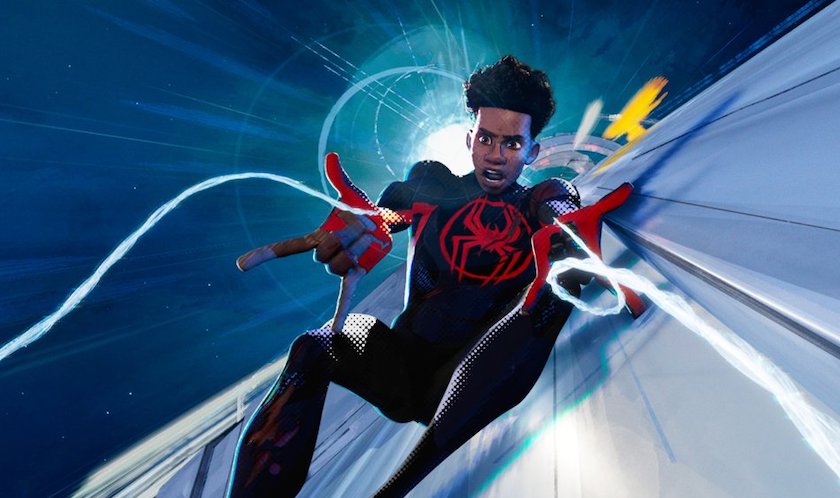

Importantly, the film ensures that the stakes feel high. There are laughs to be had throughout – a lot of it is fun, but when it gets serious, it’s deadly serious. It’s impressive how the narrative here keeps the drama targeted at not only Miles, but how the scope expands to place the stakes on the Spider-Verse as a whole. The many characters and the mind-bending multi-verse ideas are laid out efficiently and clearly, allowing us to be well situated – both logically and emotionally – to enjoy the crazy action sequences.
Across the Spider-Verse deserves applause for confidently expanding this franchise’s own corner of the crazily expanded screen universe that’s revolved around Spider-Man over the years. The story here is fresh and, appropriately, within the themes of sacrifice and tragedy that have long circled Spidey narratives. It’s one hell of a screenplay.
If there is a slight critique regarding the film’s story arc, it’s that it doesn’t quite have an arc per se. It’s important to note that Across the Spider-Verse has a final act that mostly serves as a set-up; I thought it could have provided a few more standalone elements to deliver both a second chapter with its own close and also be a “part” film. Still, the film leaves you well and truly hyped to see what follows – so, in that sense, I suppose it more than does what it sets out to do.
On the visual side of things, this film is just … on another level. The previous film looked spectacular, combining styles such as CG animation and hand-drawn techniques to craft a unique, sometimes highly abstract visual language. Across the Spider-Verse does it again – and doubles down on just how far it’s willing to go to provide the viewer with a kaleidoscope of styles. The various universes, for example, each have their own look and are brought to life with a different method of animation.
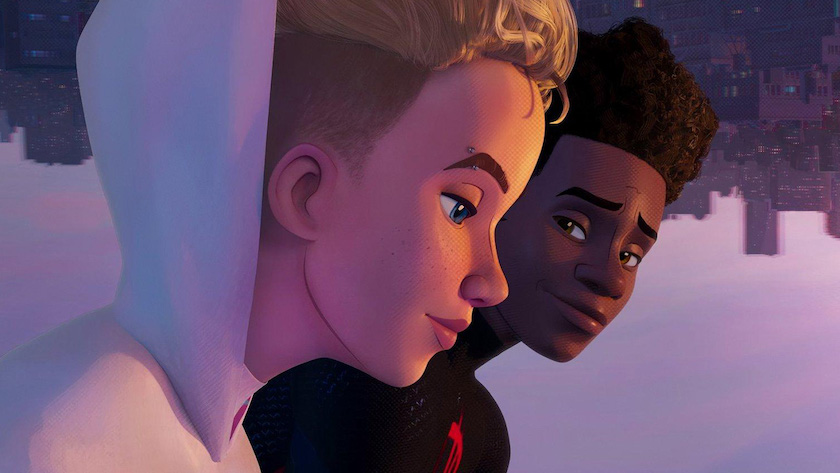

The many techniques on display are also used to provide fans with nods, with visual (and narrative) acknowledgement of the various Spidey iterations in media – from the page, to the video game, to the toy. There’s plenty of fan service in Across the Spider-Verse, but it’s done right.
The same creative ambition has been placed on the ultra-kinetic, dazzlingly artistic action sequences. The sheer scale of what the team puts into the action is dizzying, and I say that as both praise and, perhaps, as a slight warning for some viewers that could find themselves overloaded by the frantic mayhem.
There’s a lot of praise to be directed at all areas of this film. I can’t wrap the review without pointing out the fantastic voice work, with great performances from the likes of, among many others, Shameik Moore as Miles Morales, Hailee Steinfeld as Gwen Stacey, Oscar Isaac as Miguel O’Hara, and Daniel Kaluuya as Hobart Brown, aka Spider-Punk. I’ll also applaud returning composer Daniel Pemberton, who has crafted a varied score that furthers the creative wonder of it all.
Across the Spider-Verse is excellent. A more-than-worthy sequel to its high-bar predecessor, this is an ambitious, wild ride that pulses with heart and radiates with artistry. Bring on Beyond the Spider-Verse.




